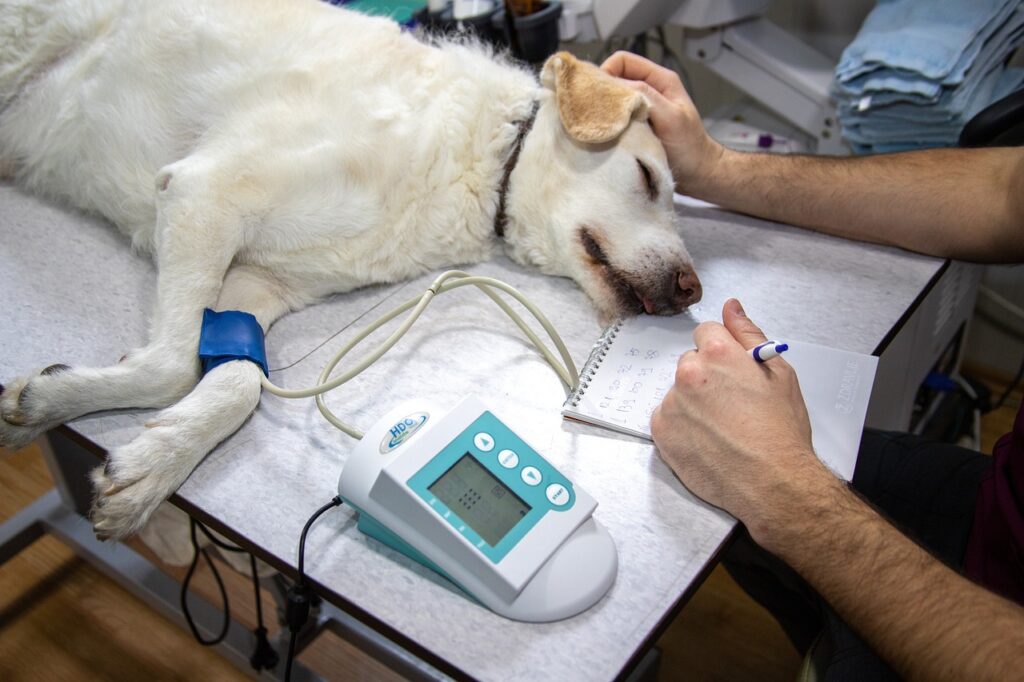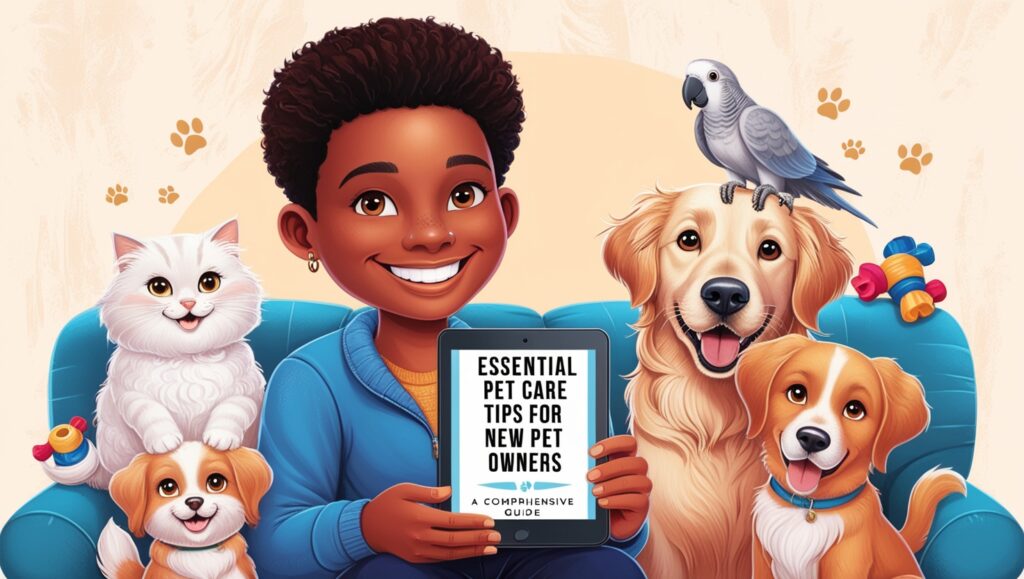Have you ever wondered why dogs act silly? From zoomies to goofy grins, our canine companions often display behaviors that leave us laughing and scratching our heads. These silly antics aren’t just random acts of goofiness; they’re an integral part of a dog’s communication and well-being. In this article, we’ll dive deep into the reasons why dogs act silly and what these behaviors mean for their physical and mental health.
From evolutionary instincts to social bonding, we’ll explore the various factors that contribute to your dog’s playful and sometimes perplexing behavior. So, grab a treat (for yourself and your pup), and let’s embark on this fascinating journey to understand the delightful world of silly dog behavior!
1. The Evolutionary Roots of Silly Behavior
To truly understand why dogs act silly, we need to take a step back in time and look at their evolutionary history. Dogs, as descendants of wolves, have retained many of their ancestors’ instincts and behaviors, albeit in modified forms.
1.1 Play as a Survival Skill
In the wild, play serves a crucial purpose for young animals. It helps them develop important skills they’ll need for survival, such as hunting, fighting, and social interaction. When puppies engage in rough-and-tumble play or chase each other around, they’re actually honing their physical abilities and learning important social cues.
As domesticated animals, our furry companions may not need these skills for survival anymore, but the instinct to play remains deeply ingrained in their DNA. This is why you might see your adult dog suddenly drop into a play bow or initiate a game of tug-of-war – they’re tapping into those ancestral behaviors that once served a vital purpose.
1.2 Social Bonding Through Silliness
Another evolutionary aspect of silly behavior in dogs is its role in social bonding. In wolf packs, play helps strengthen relationships between pack members, fostering cooperation and trust. This same principle applies to our domesticated dogs, who use playful behavior to bond with their human family members and other pets in the household.
When your dog brings you their favorite toy or initiates a game of chase, they’re not just looking for entertainment – they’re actively seeking to strengthen their bond with you. This social aspect of silly behavior is a testament to the deep emotional connection dogs have developed with humans over thousands of years of domestication.
2. The Science Behind Dog Silliness
Now that we’ve explored the evolutionary roots of silly dog behavior, let’s dive into the science behind these adorable antics. Understanding the biological and psychological factors at play can help us better appreciate and respond to our furry friends’ playful nature.
2.1 The Role of Hormones
Believe it or not, hormones play a significant role in your dog’s silly behavior. When dogs engage in playful activities, their bodies release a cocktail of feel-good hormones, including:
-
- Dopamine: Often called the “reward chemical,” dopamine is released during pleasurable activities, reinforcing the behavior and making your dog want to repeat it.
-
- Oxytocin: Known as the “love hormone,” oxytocin is released during positive social interactions, strengthening the bond between you and your pet.
-
- Endorphins: These natural painkillers are released during physical activity, creating a sense of euphoria that can contribute to your dog’s silly behavior.
This hormonal response explains why dogs often seem to get a “high” from playing and why they’re so eager to engage in silly activities – it quite literally makes them feel good!
2.2 Cognitive Benefits of Play
Silly behavior isn’t just fun for dogs; it’s also great for their cognitive health. Engaging in playful activities helps stimulate your dog’s mind, keeping them mentally sharp and reducing the risk of cognitive decline as they age.
When dogs problem-solve during play (like figuring out how to get a treat out of a puzzle toy) or learn new tricks, they’re exercising their brains. This mental stimulation is crucial for maintaining cognitive function and can even help prevent or slow the progression of canine cognitive dysfunction syndrome, a condition similar to Alzheimer’s in humans.
3. Common Silly Dog Behaviors Explained
Now that we understand the evolutionary and scientific basis for silly dog behavior, let’s explore some common antics and what they might mean:
3.1 Zoomies
We’ve all witnessed the phenomenon known as “zoomies” – those sudden bursts of energy where your dog races around the house or yard at top speed. But why do dogs do this?
Zoomies, officially known as Frenetic Random Activity Periods (FRAPs), are often a way for dogs to release pent-up energy. They’re more common in younger dogs but can occur at any age. Triggers for zoomies can include:
-
- Excitement after being confined (e.g., after a car ride or coming out of their crate)
-
- Relief after a stressful situation (like a bath)
-
- Simply having excess energy to burn
While zoomies are generally harmless, it’s important to ensure your dog has a safe space to zoom without risk of injury.
3.2 Tail Chasing
The sight of a dog chasing its tail is both amusing and perplexing. But why do they engage in this seemingly pointless activity?
For puppies, tail chasing is often a form of self-discovery. They’re learning about their bodies and figuring out that the tail is a part of them. In adult dogs, occasional tail chasing can be a sign of playfulness or boredom.
However, if tail chasing becomes excessive or compulsive, it could indicate an underlying issue such as:
-
- Anxiety or stress
-
- Attention-seeking behavior
-
- Medical problems (like skin irritations or neurological issues)
If you’re concerned about your dog’s tail-chasing behavior, it’s always best to consult with your veterinarian.
3.3 Playful Barking and Vocalizations
Dogs have a rich vocabulary of vocalizations, and many of these sounds come out during play. From high-pitched yips to playful growls, these noises are your dog’s way of expressing excitement and inviting others to join in the fun.
Different breeds may have different “play voices.” For example, huskies are known for their unique “woo-woo” vocalizations, while some smaller breeds might let out excited yaps.
It’s important to note that while playful barking is normal, excessive barking could be a sign of boredom, anxiety, or other issues. Understanding the context and frequency of your dog’s vocalizations can help you determine whether it’s just playful silliness or if there might be an underlying concern.
3.4 Funny Faces and Head Tilts
One of the most endearing silly behaviors dogs exhibit is making funny faces or tilting their heads. But what’s behind these adorable expressions?
Head tilts often occur when a dog is trying to understand something. They might tilt their head when they hear an unfamiliar sound or when you’re speaking to them in an animated voice. This behavior may help them locate the source of a sound more accurately or pick up on visual cues from your face.
As for funny faces, dogs are masters of non-verbal communication. A dog’s facial expressions can convey a wide range of emotions, from joy to confusion. When your dog makes a silly face, they might be:
-
- Responding to your own facial expressions
-
- Trying to get your attention
-
- Expressing excitement or anticipation
These expressions are part of the complex social communication system that dogs have developed, both with each other and with humans.
4. The Importance of Silly Behavior for Dog Well-being
While silly dog behavior is undoubtedly entertaining for us, it’s crucial to understand that it plays a vital role in your dog’s overall well-being. Let’s explore why encouraging and facilitating playful behavior is so important for our canine companions.
4.1 Physical Health Benefits
Regular play and silly behavior contribute significantly to your dog’s physical health. When dogs engage in active play, they’re getting valuable exercise that helps:
-
- Maintain a healthy weight
-
- Improve cardiovascular health
-
- Enhance muscle tone and flexibility
-
- Boost the immune system
Encouraging your dog to be silly and playful is an excellent way to ensure they’re getting enough physical activity, especially for dogs that live in apartments or have limited outdoor space.
4.2 Mental Stimulation
As mentioned earlier, silly behavior and play provide crucial mental stimulation for dogs. This cognitive exercise is essential for:
-
- Preventing boredom and destructive behaviors
-
- Keeping the mind sharp, especially in older dogs
-
- Fostering problem-solving skills
Providing your dog with puzzle toys, teaching them new tricks, or engaging in interactive play sessions are all great ways to encourage mental stimulation through silly behavior.
4.3 Emotional Well-being
Play and silly behavior are also crucial for your dog’s emotional health. When dogs engage in playful activities, they experience:
-
- Reduced stress levels
-
- Increased happiness and contentment
-
- Improved mood and decreased likelihood of depression
-
- Strengthened bonds with their human family members and other pets
By encouraging and participating in your dog’s silly antics, you’re contributing to their overall emotional well-being and quality of life.
5. How to Encourage and Manage Silly Behavior
Now that we understand the importance of silly behavior in dogs, let’s look at how we can encourage it in a healthy way and manage it when necessary.
5.1 Providing Appropriate Outlets
To encourage healthy silly behavior, provide your dog with appropriate outlets for their energy and playfulness:
-
- Offer a variety of toys that cater to different play styles (e.g., chew toys, puzzle toys, plush toys)
-
- Set aside dedicated playtime each day for interactive games like fetch or tug-of-war
-
- Create a safe space where your dog can engage in zoomies or other high-energy play
-
- Consider agility training or other dog sports as a structured outlet for playful energy
5.2 Setting Boundaries
While silly behavior is generally positive, it’s important to set boundaries to ensure it doesn’t become disruptive or dangerous:
-
- Teach your dog basic obedience commands to help control their excitement
-
- Establish calm-down cues to help your dog transition from playtime to quieter activities
-
- Ensure your home is dog-proofed to prevent accidents during enthusiastic play sessions
-
- Be consistent with rules about when and where certain types of play are appropriate
5.3 Recognizing When Silly Behavior Might Be a Problem
While most silly behavior is harmless and even beneficial, it’s important to recognize when it might indicate an underlying issue:
-
- Excessive or compulsive behaviors (like constant tail chasing) could signal anxiety or medical problems
-
- Sudden changes in play behavior might indicate pain or illness
-
- Overly rough play or inability to calm down could be signs of poor socialization or overarousal
If you’re concerned about your dog’s behavior, always consult with a veterinarian or a certified dog behaviorist for professional advice.
Conclusion:
Understanding why dogs act silly gives us a deeper appreciation for our furry friends and their complex emotional and social lives. From their evolutionary history to the intricate workings of their brains and bodies, every aspect of a dog’s silly behavior tells a story of adaptation, communication, and the deep bond between humans and canines.
By embracing and encouraging appropriate silly behavior, we not only enrich our dogs’ lives but also strengthen our relationship with them. So the next time your dog engages in a bout of the zoomies or makes a goofy face at you, remember that they’re not just being silly – they’re expressing joy, relieving stress, and inviting you to join in their world of play and happiness.
As responsible pet owners, it’s our job to provide safe outlets for this natural behavior while also being attentive to any changes that might signal underlying issues. By doing so, we ensure that our beloved companions lead happy, healthy, and delightfully silly lives.
So go ahead, throw that ball one more time, engage in a playful game of tug-of-war, or simply laugh along with your dog’s antics. After all, a little silliness goes a long way in creating a joyful life for both you and your furry best friend.



